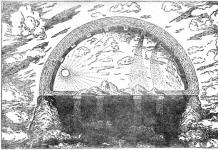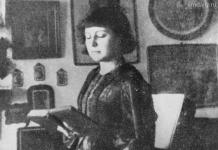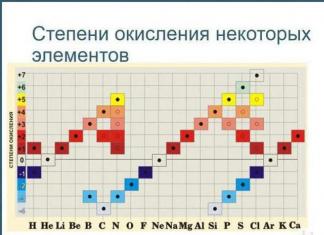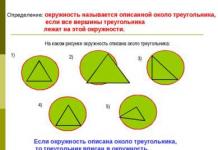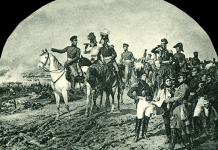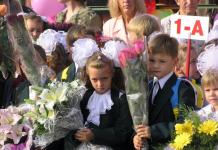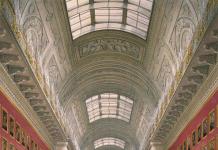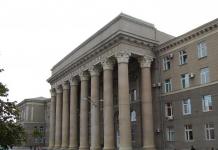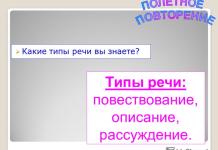В мире много народов и культур, но англичан вы точно не спутаете ни с кем! Хотя их принято считать хладнокровными, сдержанными и чопорными, на самом деле, они дружелюбны, покладисты и очень любят спорт. Интересное сочетание, не правда ли? Так давайте же узнаем побольше об обычаях и традициях англичан, ведь изучая английский язык, важно понимать, как живет и чем дышит этот народ.
Англичане — кто они, какие они?
Англичане от природы вежливы и никогда не устают говорить “Please” и “Thank you”. Они дисциплинированны и не станут громко разговаривать на улице. Они не толкаются, чтобы скорее занять место в автобусе или поезде и встают в очередь на автобусной остановке. Англичане не пожимают руки при встрече. Они стараются не показывать эмоции на публике даже в трагических обстоятельствах. Они не теряют самообладание и сохраняют оптимизм в сложных ситуациях.
Англичане — нация домоседов . Они говорят: «Мой дом — моя крепость» и не любят, чтобы соседи вмешивались в их жизнь. Англичане предпочитают небольшие дома, рассчитанные на одну семью. Камин — сердце английского дома. В то время как жители других стран ходят по вечерам в кафе или коктейль-бары, англичане предпочитают собираться в гостиной и сидеть у огня, обсуждая события прошедшего дня. Во многих домах можно и сегодня встретить камины, иногда с колоннами по бокам и верхней полочкой, где стоят часы, зеркало или семейные фотографии.
Британцы любят садоводство и обожают о нем говорить. Они могут обсуждать методы выращивания огурцов или рассказывать о своем уникальном цветнике, так не похожем на остальные. Иногда британцы выращивают растения в ящике за кухонным окном или в саду у дома. Они очень любят цветы.
Также британцы очень любят животных. На все население приходится около пяти миллионов собак, примерно столько же кошек, три миллиона попугаев, других птиц и аквариумных рыб — а также миллион экзотических животных, например, рептилий. В Британии есть специальные магазины, где продается корм, одежда и другие предметы для собак. Есть собачьи парикмахерские, тренажерные залы и кладбища. В Британии от имени животных посылают рождественские открытки и поздравления с днем рождения. Владельцы могут покупать животным дорогие ошейники, шерстяные пальто, кружевные платьица, пижамы и так далее. При аэропортах есть специальные гостиницы для питомцев. Англичане считают, что они — единственная нация, которая так заботится о животных.

По выходным те, кто живут в крупных городах, любят выезжать на природу. Каждый англичанин любит проводить время в загородном доме с садом и розовыми кустами у крыльца — на свежем воздухе, вдали от суеты, в тишине и покое.
Те, кто остаются дома, стараются сделать все дела, которые не успели сделать за неделю. Кто-то в субботу утром ходит по магазинам, кто-то занимается хозяйством — стиркой и уборкой. Кто-то посещает спортивные мероприятия или сам занимается спортом.
Субботний вечер — подходящее время для вечеринок, танцев, походов в кино или театр.
В воскресенье после завтрака англичане работают в саду, гуляют с собакой, посещают паб. По воскресеньям принято приглашать друзей и родственников на чай.
Традиции англичан в еде
Есть и некоторые традиции, касающиеся еды. Английская кухня — основательная, простая и питательная. Англичане предпочитают плотный завтрак. Он может состоять из овсяной каши, яичницы с беконом, жареной рыбы, тостов с джемом, чая или кофе. Тосты они предпочитают холодными. Как правило, завтрак одинаков изо дня в день.
Чай — неотъемлемая часть жизни британцев, как картофель или хлеб. Есть даже поговорка: «Семь чашек чая помогут проснуться, девять чашек помогут заснуть».

Дневной прием пищи называется ланчем. В будние дни может подаваться мясное рагу, жареная рыба, отбивные, печень, колбаски, овощи. Рис и макароны англичане едят редко. На десерт подается яблочный пирог или горячий молочный пудинг. Воскресный обед — особое событие. На него подается говяжья или баранья вырезка с овощами, а затем — большой пудинг с заварным кремом. С 4 до 6 вечера — время чаепития, которое называют “5 o"clock”. В это время пьют чай с пирожными или маленькими бутербродами. В каком-то смысле, это целый ритуал. Ради чаепития откладываются все другие дела.
Ужин (обычно после 6 вечера) во многом похож на ланч, и во многих семьях это последний прием пищи за день. Иногда за ним может последовать “supper” — обычно это какао с легкой закуской из хлеба и сыра.
У англичан есть популярное особое блюдо, известное как “fish and chips” — рыба с жареной картошкой. Лучше всего покупать его с лотка на стадионе и съедать прямо во время футбольного матча.
Объектом исследования моей работы являются обычаи и традиции англо-говорящих стран. И я хочу сказать, что жизнь этих стран полна традиций и обычаев. Некоторые из них очень красивые, красочные и живописные и, кажется, весьма разумные; другие - любопытны, иногда забавны, иногда существуют лишь для привлечения туристов. Многие традиции появились очень давно и прошли многие столетия, другие – появились сравнительно недавно. Но некоторые из них давно пережили себя и стали обременительными и остаются лишь из-за известного английского консерватизма. Есть много традиций, связанных с историческими событиями, Парламентом, судом, университетской жизнью, а также традиции и обычаи, появляющиеся в каждодневной жизни.
Приблизительно одна треть населения земного шара разговаривают на английском языке. Для некоторых он является родным, другим – в силу исторически сложившихся обстоятельств стал вторым после родного. В странах, куда английский язык был привнесен, он искажается и трансформируется с учетом новых для него “условий жизни”, “приспосабливается” к местным обычаям и традициям, принимая различные диалектные формы.
Похожее случилось и с исконно английскими традициями. В разных местностях они приобретали собственное толкование и постепенно видоизменялись и даже до такой степени, что при сравнении вряд ли возможно найти схожие черты у старой английской традиции и у преобразовавшейся.
Цель моей работы – изучить обобщенный опыт жизни и традиций англо-говорящих стран. Для людей, которые собираются путешествовать по миру особенно важно знать язык, обычаи, традиции той страны, которую они собираются посетить. Невозможно, например, приехать в Шотландию и смеяться над их национальной одеждой - клетчатыми юбками; или, например, удивляться тому, что Королева Великобритании начинает свой день с завтрака - овсяной каши - и это уже давно сложившийся для нее обычай. Для того чтобы избежать такой ситуации, перед тем как ехать в какую-либо страну необходимо ознакомиться хотя бы с общепринятыми обычаями этой страны.
Одной из главных традиций большинства государств мира является празднование своего национального праздника. Во Франции это День взятия Бастилии, в США – День независимости, в Германии два национальных праздника – День освобождения и День республики. В нашей стране – День суверенитета.
А как обстоят дела с национальными праздниками в Великобритании? Будучи островным государством, Британия долгое время оказывала влияние на политическое и социально-экономическое развитие других государств. Проводя гибкую политику, Британия сумела принимать участие в большинстве международных военных конфликтах, не допустив военных действий на своей территории. Все это способствовало развитию высокому уровню жизни и благосостоянию английского народа. Англичане не ощущали особой потребности в национальном самоутверждении и в специальном дне для ликования по поводу того, что они – британцы. Народ Соединенного Королевства не испытывал нужды каждый год напоминать себе и другим, что, например, британский парламент, возраст которого перевалил за семь столетий, становится еще на год старше или что тред-юнионы - самые старые профсоюзы в мире. Правда, в последние годы существования Британской империи был введен День империи, но отмечался он недолго, а выходным был лишь для школьников и учителей. В 1958 году его заменил День Содружества, который с 1966 года отмечается в июне как официальный день рождения монарха. Англичане рассуждают примерно так: «Мы уже достаточно веско заявили миру о себе, чтобы не повторяться теперь ежегодно». Но национальный праздник все-таки необходим для официальных целей – так, за границей послам полагается устраивать приемы в честь дня своей страны, они выступают по телевидению той страны, где представляют свою родину и т. д.
Национальным праздником Соединенного Королевства является день рождения монарха, о котором уже было сказано. А сейчас я хочу остановиться на том особенном, что характерно для некоторых англо-говорящих стран.
“Do you speak English?” with this phrase begins the conversation between two people, that speak different languages and want to find a common language.
It’s very good when you hear: “Yes I do”, and start talking. People of different countries and nations have to get along well with the progress in world trade and technology as well as with each other.
So it is very useful to learn foreign languages. Knowledge of foreign languages helps us to develop friendship and understanding among people.
English is very popular now. It’s the language of computers, science, business, sport and politics. It is official language of United Kingdom, Ireland, the United States of America, Canada, Australia. There are more than 1 billion speakers of English of the World.
Speaking a foreign language you are read papers, magazines, and original books by great writers, watch satellite TV Programs. If you like traveling you can go anywhere without being afraid that other people will not understand you. English is very important to find a good job.
USA
Independence Day
On July 4 the Americans celebrate their national holiday-independence Day. The United States gained independence as a result of gradual and painful process. By the mid 1700’s it became difficult for thirteen British colonies in the New World to be ruled by a kind 3000 miles across the ocean. The British Empire imposed high taxes upon the colonies.
In 1774, the First Continental Congress drew up a list of grievances against the British crown. This document was the first draft of the document that would formally separate colonies from England. In 1755, the Revolutionary War began. On July 2, 1776, the Second Continental Congress presented a second draft of the list of grievances. On July 4 the Continental Congress approved the declaration of Independence. But the War of independence lasted until 1783. After the war Independence Day became an official holiday.
On July 4, Americans have holiday from work. People have day-long picnic with favorite foods like hot dog, hamburgers, potato salad, baked beans. Lively music is heard everywhere. People play baseball or compete three-legged races or pie-eating or water-melon-eating contests. Some cities have parades with people dressed as the original founding fathers who march to the music of high school bands. In the evening people gather to watch firework displays. Wherever Americans are around the globe they will get together to celebrate Independence Day.
Sport
Americans’ interest in sport seems excessive to many foreign visitors. Television networks spend millions of dollars arranging to telecast sport events. Publications about sports sell widely. In the US professional athletes can became national heroes.
Sports are associated with educational institutions in a way is unique. High schools have coaches as faculty members, and school teams compete with each other.
Nowhere else in the world are sports associated with colleges and universities in the way they are in the States. College sports, especially football, are conducted in an atmosphere of intense excitement and pageantry. Games between teams attract nationwide television audiences
The sport that is most popular in most of the world-soccer-is not well known in the US. The most popular sports are football and baseball, games that are not played in large number of countries.
Spots play such an important role in American life that the sociology of sport, sport medicine, and sport psychology have become respectable specializations.
Many Americans jog every day, or play tennis or bridge two or three times a week. They go on ski trips and hunting expeditions that require weeks of planning and organizing. In Americans’ view, all these activities are worth the discomfort they may cause because they contribute to health and physical fitness. That is probably why Americans are known as a healthy nation.
Americans are very fond of sport. The most popular sports in USA are football, baseball, basketball and ice hockey.
American football derives from the English game of rugby. It started at Harvard University in the1870’s. It is a game for two teams of eleven men on field. The object of the game is to have control of the ball and to score points by carrying it across the goal-line.
Baseball is a team game derived from the English game of cricket. It is played with a bat and ball by two teams of nine players each, on a field with four bases. Baseball is the national game in the USA and it is very popular in Canada too.
Basketball is a game which nowadays is popular all over the world. It was invented in 1891. During the ‘20s the first US league championship was organized. In the ‘70s the American Championship was divided into two leagues: the ABA (American Basketball Association), which does not exist any longer and which played with a blue, red and white ball and NBA (National Basketball Association).
The NBA is a professional league which still plays.
There are more activities which Americans take part in such as golf, swimming, tennis, aerobics, wrestling, etc.
Halloween
Halloween is a festival that takes place on October 31. In the us children wear costumes and masks and go trick-or-treating. Many of them carve jack-o’-lantens out of pumpkins. Fortunetelling and storytelling about ghosts and witches are popular activities.
Halloween developed from new year festivals and festivals of the dead. Christian church established a festival on November 1 called All Saints’ Day so that people could continue to celebrate their festivals. The Mass said on All Saints’ Day was called Allhallowmass. The day before All Saints Day was known all hallows Eve or Halloween.
The main Halloween activity for children is trick-or-treating. Children dress in costumes and masks and go from door to door saying “trick or treat”. The neighbors give children such treats as candy, fruit and pennies so that children do not play tricks on them.
Jack-o’-lanterns are hallowed-out pumpkins with face carved into one side. Most jack-o-lanterns contain a cantle inside. An Irish legend says that jack-o’-lanterns are named after the man called jack. He could not enter heaven because he was a miser, and he could not enter hell because he had played jokes on devil. As a result, Jack has to walk on the earth with his lantern until Judgment Day.
Fortunetelling an important part of Halloween. For example, a coin, a ring, and thimble were baked into a cake. It was believed that the person who found the ring would marry soon. And the person who found the thimble would never get married. Today people practice cardreading or palmistry.
People once believed that there were many ghosts and witches on the Earth and that they met on October 31 to worship the devil. Today, people do not believe in ghosts and witches but they like to tell stories about them on Halloween.
Thanksgiving
Almost in every culture in the world there is a celebration of thanks for rich harvest. The American Thanksgiving began as a feast of thanksgiving almost four hundred years ago.
In 1620, a religious community sailed across the Atlantic Ocean to settle in the New World. They settled in what is now known as the state of Massachusettes. Their first winter in America was difficult. They arrived too late to grow a rich harvest. Moreover, half the colony died from disease. The following spring the Iroquois Indians taught them how to grow corn. Indians showed them also how to grow other crops and how to hunt and fish.
In the autumn of 1621 they got a beautiful harvest of corn, barley, beans and pumpkins. The colonists had much to be thankful for, so they planned a feast. Local Indian chief and ninety Indians were present. The colonists learned from Indians how to cook cranberries and dishes of corn and pumpkins.
In following years many of the colonists celebrated the harvest with a feast of thanks. After the United States gained independence, Congress recommended one yearly day of thanksgiving for the whole country. Later George Washington suggested the date November 26 as Thanksgiving Day. Than, after the civil war, Abraham Lincoln suggested the last Thursday in November to be the day of thanksgiving.
On Thanksgiving Day, family members gather at the house of an older relative, even if they far away. All give thanks for everything good they have. Charitable organizations offer traditional meal to homeless.
Foods, eaten at the first thanksgiving, have become traditional. The traditional thanksgiving meal consists of roast turkey stuffed with herb-flavored bread, cranberry jelly, mashed potatoes, pumpkin pie. Other dishes may vary as to region: ham, sweet potatoes, creamed corn.
Christmas
Christmas is Christian holiday that celebrates the birth of Jesus Christ. For millions of Christmas throughout the world it is the happiest and the busiest time of the year. No one knows the exact date of Christ’s birth but most Christians celebrate Christmas on December 25. The world Christmas comes from Christes maesse, an early English phrase that means Mass of Christ.
People of different countries celebrate Christmas in various ways. People in the United States and Canada decorate their homes with Christmas trees, wreaths and ornaments. City streets are filled with colored lights; the sound of bells and Christmas carols can be heard everywhere.
Children write letters to Santa Claus and tell him what presents they would like to get. Many department stores hire people to a Santa Claus costume and listen to children’s requests. People send Christmas cards to relatives and friends. Many companies give presents to their employees.
A Christmas tree is one of the main symbols of Christmas in most homes. Relatives and friends may join in trimming the tree with lights, tinsel, and colorful ornaments. Presents are placed under the tree. On Christmas Eve or Christmas morning, families open their presents. Many children believe that Santa Claus arrives on Christmas Eve in a sleigh pulled by reindeer and brings present. Some children hang up stockings so Santa Claus can fill them with candy, fruits and other small gifts.
In many parts of the United States and Canada groups of people walk from house to house and sing Christmas carols. Some people give singers money or small gifts or invite them for a warm drink. Many people attend church services on Christmas Eve or Christmas morning. They listen to readings from Bible and singing Christmas carols.
A traditional Christmas dinner consist of stuffed turkey, mashed potatoes, cranberry sauce a variety of other dishes. Some families have ham or roast goose instead of turkey. Pumpkin pie, plum pudding, and fruitcake are favorite desserts.
Valentine’s Day
There are several legends about St. Valentine’s Day. One of the legends says that Valentine was Christian pries who lived in the 3 century A.D. he was put into prison by roman authorities for his teachings and was beheaded on February cured his jailer’s daughter of her blindness. Before the execution he wrote her a letter signed “From Your Valentine”. Another legend says that the same Valentine wrote to children and friends who loved him from the jail.
According to another legend, Valentine was an Italian bishop who lived at about the same time. He was thrown into prison because he secretly married couples, contrary to the laws of the Roman Empire. The legend says that he was burnt at the stake.
February 14 was also a Roman holiday. On this day young men randomly chose the name of the girl to escort to the festival. The custom of choosing a sweetheart on this day became very
Введение
Объектом исследования моей работы являются обычаи и традиции англо-говорящих стран. И я хочу сказать, что жизнь этих стран полна традиций и обычаев. Некоторые из них очень красивые, красочные и живописные и, кажется, весьма разумные; другие - любопытны, иногда забавны, иногда существуют лишь для привлечения туристов. Многие традиции появились очень давно и прошли многие столетия, другие появились сравнительно недавно. Но некоторые из них давно пережили себя и стали обременительными и остаются лишь из-за известного английского консерватизма. Есть много традиций, связанных с историческими событиями, Парламентом, судом, университетской жизнью, а также традиции и обычаи, появляющиеся в каждодневной жизни.
Приблизительно одна треть населения земного шара разговаривают на английском языке. Для некоторых он является родным, другим в силу исторически сложившихся обстоятельств стал вторым после родного. В странах, куда английский язык был привнесен, он искажается и трансформируется с учетом новых для него “условий жизни”, “приспосабливается” к местным обычаям и традициям, принимая различные диалектные формы.
Похожее случилось и с исконно английскими традициями. В разных местностях они приобретали собственное толкование и постепенно видоизменялись и даже до такой степени, что при сравнении вряд ли возможно найти схожие черты у старой английской традиции и у преобразовавшейся.
Цель моей работы изучить обобщенный опыт жизни и традиций англо-говорящих стран. Для людей, которые собираются путешествовать по миру особенно важно знать язык, обычаи, традиции той страны, которую они собираются посетить. Невозможно, например, приехать в Шотландию и смеяться над их национальной одеждой - клетчатыми юбками; или, например, удивляться тому, что Королева Великобритании начинает свой день с завтрака - овсяной каши - и это уже давно сложившийся для нее обычай. Для того чтобы избежать такой ситуации, перед тем как ехать в какую-либо страну необходимо ознакомиться хотя бы с общепринятыми обычаями этой страны.
Одной из главных традиций большинства государств мира является празднование своего национального праздника. Во Франции это День взятия Бастилии, в США День независимости, в Германии два национальных праздника День освобождения и День республики. В нашей стране День суверенитета.
А как обстоят дела с национальными праздниками в Великобритании? Будучи островным государством, Британия долгое время оказывала влияние на политическое и социально-экономическое развитие других государств. Проводя гибкую политику, Британия сумела принимать участие в большинстве международных военных конфликтах, не допустив военных действий на своей территории. Все это способствовало развитию высокому уровню жизни и благосостоянию английского народа. Англичане не ощущали особой потребности в национальном самоутверждении и в специальном дне для ликования по поводу того, что они британцы. Народ Соединенного Королевства не испытывал нужды каждый год напоминать себе и другим, что, например, британский парламент, возраст которого перевалил за семь столетий, становится еще на год старше или что тред-юнионы - самые старые профсоюзы в мире. Правда, в последние годы существования Британской империи был введен День империи, но отмечался он недолго, а выходным был лишь для школьников и учителей. В 1958 году его заменил День Содружества, который с 1966 года отмечается в июне как официальный день рождения монарха. Англичане рассуждают примерно так: Мы уже достаточно веско заявили миру о себе, чтобы не повторяться теперь ежегодно. Но национальный праздник все-таки необходим для официальных целей так, за границей послам полагается устраивать приемы в честь дня своей страны, они выступают по телевидению той страны, где представляют свою родину и т. д.
Национальным праздником Соединенного Королевства является день рождения монарха, о котором уже было сказано. А сейчас я хочу остановиться на том особенном, что характерно для некоторых англо-говорящих стран.
“Do you speak English?” with this phrase begins the conversation between two people, that speak different languages and want to find a common language.
Its very good when you hear: “Yes I do”, and start talking. People of different countries and nations have to get along well with the progress in world trade and technology as well as with each other.
So it is very useful to learn foreign languages. Knowledge of foreign languages helps us to develop friendship and understanding among people.
English is very popular now. Its the language of computers, science, business, sport and politics. It is official language of United Kingdom, Ireland, the United States of America, Canada, Australia. There are more than 1 billion speakers of English of the World.
Speaking a foreign language you are read papers, magazines, and original books by great writers, watch satellite TV Programs. If you like traveling you can go anywhere without being afraid that other people will not understand you. English is very important to find a good job.
USA
Independence Day
On July 4 the Americans celebrate their national holiday-independence Day. The United States gained independence as a result of gradual and painful process. By the mid 1700s it became difficult for thirteen British colonies in the New World to be ruled by a kind 3000 miles across the ocean. The British Empire imposed high taxes upon the colonies.
разработка содержит материал, касающийся традиций и обычаев Соединённого Королевства.
Просмотр содержимого документа
«методичка ТРАДИЦИИ И ОБЫЧАИ АНГЛОГОВОРЯЩИХ СТРАН»
Разработка открытого урока
на тему: «Традиции и обычаи англоговорящих стран»
Цели урока:
Практические:
· развитие умения аудировать;
· активизация лексики по теме;
· развитие говорения (умения сообщать, объяснять, рассказывать);
· развитие навыков самостоятельной работы и работы в команде.
Образовательные:
· приобретение знаний об истории, традициях и обычаях англоговорящих стран;
Воспитательные:
· воспитание положительного отношения к культуре народа изучаемого языка;
Развивающие:
· развитие творческих способностей учащихся;
· развитие умения общаться, а также таких черт характера как
трудолюбие, целеустремленность, активность.
Учебно-методические задачи.
- Общеобразовательные:
Привлечение учащихся к активной творческой деятельности; -формирование коммуникативного поведения;
активизация навыков и умений в аудировании, говорении, письме; - расширение знаний страноведческого характера.
Развивающие:
- развитие памяти, внимания, логического мышления;
Развитие способности к догадке;
Воспитательные:
Обучать навыкам взаимопонимания;
Формировать чувство ответственности при работе в команде; толерантного отношения друг к другу
Активизировать интерес к изучению английского языка;
Привлечь учащихся к активной творческой деятельности.
1.Организационный момент. Этап введения учащихся в урок.
Good morning, pupils! The theme of our lesson today is traditions and customs of English-speaking countries. We are going to discuss such holidays celebrating in Great Britain as the Bonfire Night, Christmas and New Year and the May Day. But, firstly, I would like to tell you about celebrations in Britain in the whole.
2. Преподаватель рассказывает на английском языке общую информацию о праздниках и традициях Великобритании. Рассказ сопровождается презентацией.
3. Первый учащийся выходит и рассказывает о празднике the Bonfire Night на английском(см. Приложение 1). После своего рассказа данный учащийся задаёт вопросы группе по теме, затем, с помощью презентации, демонстрирует задания, которые остальные учащиеся должны выполнить. На данном этапе отрабатываются коммуникативные навыки и навыки аудирования, т.к. презентация содержит видео на английском языке. Здесь необходимо отметить, что доклад, презентация и задания по теме были подготовлены заранее студентом. Преподаватель на этапе подготовки материала контролирует и проверяет работу студента.
4. Следующий учащийся рассказывает на английском об обычаях празднования Рождества и Нового года в Соединённом Королевстве(см. Приложение 2). Рассказ сопровождается презентацией, выполненной студентом. На данном этапе отрабатываются навыки написания письма, т.к итогом рассказа студента является демонстрация письма на английском языке, которое требует ответа. Учащиеся группы должны написать ответное письмо, описав в нём свой любимый праздник и особенности его проведения в нашей стране. Должны отметить, что в презентации есть схема написания письма в английском языке. Преподаватель ещё раз напоминает студентам о некоторых нюансах написания письма в английском, опираясь на данную схему, затем, студенты выполняют задание. После этого некоторым студентам предлагается зачитать свои варианты ответного письма. Преподаватель после завершения чтения, говорит об ошибках, допущенных студентами. Затем, преподаватель раздаёт учащимся задания на отработку лексико-грамматических навыков по данной теме (Рождество и Новый год). (см. Приложение 3).
5. Последний учащийся рассказывает о празднике May Day . Рассказ студента сопровождается презентацией и видео об обычаях проведения этого праздника (см. Приложение 4). На данном этапе отрабатываются навыки аудирования. После завершения рассказа учащимся предлагается разгадать кроссворд по данной теме.
6. завершающий этап, подведение итогов, выставление оценок.
Приложение 1
British people celebrate Bonfire Night every year on 5 November in memory of a famous event in British history, the Gunpowder Plot. On 5 November 1605 a group of Roman Catholics planned to blow up the Houses of Parliament while King James I was inside. On the evening before, one of them, Guy Fawkes, was caught in the cellars with gunpowder (= an explosive), and the plot was discovered. He and all the other conspirators were put to death. Bonfire Night is sometimes called Guy Fawkes Night.
Originally, Bonfire Night was celebrated as a victory for Protestants over Catholics, but the festival is now enjoyed by everyone. Some children make a guy, a figure of a man made of old clothes stuffed with newspaper or straw to represent Guy Fawkes. The guy is then burned on top of a bonfire on Bonfire Night. A few days before, children take their guy into the street and ask for a ‘penny for the guy’, money for fireworks (= small packets of explosives which, when lit, make a bang or send a shower of coloured light into the air). Only adults are legally allowed to buy fireworks.
Some people hold private bonfire parties in their gardens, while others attend larger public events organized by local councils or charities. Chestnuts or potatoes are often put in the bonfire so that they will cook as it burns. Fireworks such as Roman Candles, Catherine Wheels, bangers and rockets are put in the ground and are let off one by one. Children hold lighted sparklers (= metal sticks covered in a hard chemical substance that burns brightly when lit) in their hands and wave them around to make patterns. Unfortunately, there are sometimes accidents involving fireworks and there are now restrictions on the type of fireworks that can be used by the general public.
▪ English history
(1605), the conspiracy of English Roman Catholics to blow up Parliament and King James I, his queen, and his oldest son on November 5, 1605. The leader of the plot, Robert Catesby (Catesby, Robert), together with his four coconspirators-Thomas Winter, Thomas Percy, John Wright, and Guy Fawkes (Fawkes, Guy)-were zealous Roman Catholics angered by James"s refusal to grant more religious toleration to Catholics. They apparently hoped that the confusion that would follow the murder of the king, his ministers, and the members of Parliament would provide an opportunity for the English Catholics to take over the country.
In the spring of 1605 the conspirators rented a cellar that extended under the palace at Westminster. There, Fawkes, who had been fighting in the Spanish Netherlands, concealed at least 20 barrels of gunpowder. The conspirators then separated until the meeting of Parliament.
In the interim the need for broader support persuaded Catesby to include more conspirators. One of these, Francis Tresham, warned his Catholic brother-in-law Lord Monteagle not to attend Parliament on November 5, and Monteagle alerted the government to the plot. Fawkes was discovered in the cellar on the night of November 4–5 and under torture revealed the names of the conspirators. Catesby, Percy, and two others were killed while resisting arrest, and the rest were tried and executed (January 31, 1606).
The plot bitterly intensified Protestant suspicions of Catholics and led to the rigorous enforcement of the recusancy law, which fined those who refused to attend Anglican services. In January 1606 Parliament established November 5 as a day of public thanksgiving. The day, known as Guy Fawkes Day, is still celebrated with bonfires, fireworks, and the carrying of “guys” through the streets.
In the UK, Bonfire Night or Guy Fawkes is celebrated on November 5th and the night skies are filled with colour. It"s a special day in honour of a historic event.
Bonfires, Guys and fireworks
On November 5th people remember the plot to blow up the Houses of Parliament by celebrating ‘Bonfire Night’. All over Britain there are firework displays and bonfires with models of Guy Fawkes, which are burned on the fire. The Guy is made of old clothes and the clothes are filled with newspaper. The Guy is a reminder of Guy Fawkes. The fireworks are a reminder of the gunpowder that Guy Fawkes hid in the cellar of Parliament. Some people have a small bonfire in their garden on November 5th. In main towns and cities there are big bonfires and firework displays. The biggest fireworks display is the Edenbridge Display in Kent. Edenbridge also has the biggest Guy. A 9-metre ‘celebrity’ model is burned there every year. Last year the celebrity Guy was Wayne Rooney wearing Shrek–style ears and a Manchester United football shirt.
It’s normally quite cold in November in Britain, so on Bonfire Night people wear hats, scarves and gloves to spend the evening outside. They need some warm food too. Traditional Bonfire Night food is hot baked potatoes. The potatoes are cooked on the bonfire and filled with butter and cheese. There are also toffee apples (apples on a stick, covered in sweet toffee) and in the north of England they eat a special type of cake called parkin. Cooking marshmallows on the bonfire is also popular. Yum!
Penny for the Guy
In Britain only adults can buy fireworks but in the past they were sold to children too. During the days before Bonfire Night, children used to take their home-made Guys onto the streets and ask for ‘a penny for the Guy’ to collect money to buy fireworks. Now you have to be over 18 to buy fireworks, and safety on Bonfire Night is an important issue.
Приложение 2
Christmas in the United Kingdom
In the UK (or Gr eat Britain), families often celebrate Christmas together, so they can watch each other open their presents! Most families have a Christmas Tree (or maybe even two!) in their house f or Christmas. The decorating of the tree is usually a family occasion, with everyone helping. Christmas Trees were 1rst popularised the UK b y Prince Albert, the husband of Queen Victoria.
Most villages, towns and cities are decorated with Christmas lights over Christmas. Oft en a famous person switches them on. The most famous Christmas lights in the UK are in Oxford Street in London. Children believe that Father Christmas or Santa Claus leaves presents in stockings or pillow-cases. These are normally hung up by the re or by the children"s beds on Christmas Eve. Children sometimes leave out mince pies and brandy for Father Christmas to eat and drink when he visits them. Now, some people say that a nonalcoholic drink should be left f or Santa as he has to drive! Children write letters to Father Christmas/Santa listing their requests, but sometimes instead of putting t hem in the post, the letters are tossed into the replace. The draught carries the letters up the chimney and Father Christmas/Santa reads the smoke. There are some customs that only take place, or were started, in the UK. Wassailing is an old anglo-saxon custom that doesn"t take place much today. Boxing Day is a very old custom that started in the UK and is now taken as a holiday in many countries around the world. In the UK, the main Christmas Meal is usually eaten at lunchtime or early afternoon on Christmas Day. It"s normally roast turkey, roast vegetables and "all the trimmings" which me and vegetables like carrots & peas, stuffing and sometimes bacon and sausages. It"s oft en served with cranberry sauce and bread sauce. Traditionally, and before turkey was available, roast beef or goose was the main Christmas meal. One vegetable that is oft en at Christmas in the UK are brussel sprouts. I love them but lots of people don"t! Dessert is oft en Christmas Pudding. Mince pies and lots of chocolates are often eaten as well! Trifle is also a popular dessert at Christmas. The UK is also famous for Christmas Cake - some people love it and some people really don"t like it! It"s traditionally a rich fruit cake covered with marzipan and icing - and oft en top with Christmas themed cake decorations like a spring of holly. In the UK, it doesn"t snow very often, but people always want to know if it will be a "White Christmas". The British defnition, used b y the UK Meteorological Office (who say if it has been a Whit e Christmas in the UK or not!), is that a single snow fake has been seen falling in the 24 hours of Christmas Day! This doesn"t happen a lot in the UK!!! Statistics show that in the UK, they get an official Whit e Christmas about every 4 or 5 years and have real snow at Christmas about 1 in 10 y ears (but oft en this is only normally in Scotland!). In Scotland, some people celebrate New Year"s Eve (which is called Hogmanay) more than Christmas! The word Hogmanay comes from a kind of o at cake that was traditionally given to children on New Year"s Eve. All across the UK, in cities and towns, there are fireworks to celebrate the New Year. Two of the most famous fireworks displays are in London, along the River Thames, and in Edinburgh at the Hogmanay celebrations. Also in Scotland, the first person to set foot in a house in a New Year is thought to have a big effect on the fortunes of the people that live there! Generally strangers are thought to bring good luck. Depending on the area, it may be better to have a dark-haired or fair-haired stranger set foot in the house. This tradition is widely known as "first footing".
Приложение 3
I. Match the words with their definitions:
| 1) a national holiday in England and Wales, on the first day after Christmas Day |
|
| 2) to show that an event or occasion is important by doing something special or enjoyable |
|
| 3) something you give someone on a special occasion or to thank them for something |
|
| 5) to realize or show that a fact, event, or person is related to something |
|
| 6) a drink made from fruit juice, sugar, water, and usually some alcohol |
|
| 7) a special occasion when people celebrate something |
|
| 8) a special place in the wall of a room, where you can make a fire |
|
| 9) a vertical pipe that allows smoke from a fire to pass out of a building up into the air, or the part of this pipe that is above the roof |
|
| 10) a stick of wax with a string through the middle, which you burn to give light |
|
| 11) a large deer with long wide antlers (horns) , that lives in cold northern areas |
|
| 12) a small ugly creature in children"s stories that likes to trick people |
|
| 13) something that is done by people in a particular society because it is traditional |
|
| 14) a small imaginary creature with magic powers, which looks like a very small person |
|
| 15) the main ceremony in some Christian churches |
|
| 16) a coin of a particular value |
|
| 17) a strong alcoholic drink |
|
| 18) the night or day before an important day |
|
| 19) when someone performs a play or a piece of music |
|
| 20) to make something look more attractive by putting something pretty on it |
II. Insert the words in the gaps:
… is one of the main festivals in the Christian Calendar.
I was searching for a … for Mark’s birthday.
Children"s pictures … the walls of the classroom.
… contain a small …, a paper hat, and a joke, and are used at Christmas in Britain.
It is believed that some plants can attract ….
Some people ignore … completely.
Decorate, present, gift, goblins, Christmas, New Year, crackers.
III. Put in the right prepositions:
They celebrate Christmas … the 25 th of December.
There are a lot of traditions connected … Christmas.
The biggest Christmas tree … Great Britain stands … Trafalgar Square.
People decorate their houses … a Christmas tree
Children hang stockings … the end … their beds or … the fireplace.
Santa Clause arrives … his flying sleigh pulled … flying reindeer, climbs … the chimney and fills each stocking … presents.
The traditional lunch consists … roast turkey … vegetables, followed … Christmas pudding.
There was a custom to put an ivy leaf … water … New Year’s Eve and leave it there … Twelfth Night
The Twelfth night is … the eve … the 6 th of January.
Many people go … church … Christmas … a midnight mass … Christmas Eve or … the morning service … Christmas Day.
A Christmas box is wrapped … bright coloured paper … ribbons.
This the traditional time … making New Year resolutions, but they are more talked … than put … practice.
IV. Translate into English.
С празднованием Рождества связано много языческих и христианских традиций.
Одним из символов Рождества является малиновка, которую часто изображают на открытках.
Рождественский пудинг – традиционное блюдо, в приготовлении которого участвует вся семья.
Хлопушки – любимая детская забава.
Считается, что Санта Клаус живет на Северном полюсе вместе со своей женой. На Рождество он развозит подарки, попадая в дом через дымоход. В благодарность дети оставляют для него молоко и печенье.
Приложение 4
The earliest May Day celebrations appeared in pre-Christian Europe, although the pagan-oriented celebrations faded as Europe became Christianised, a more secular version of the holiday continued to be observed in the schools and churches of Europe well into the 20th century. In this form, In the UK May Day is best known for its traditions of dancing the Maypole and crowning of the Queen of the May.
MAY DAY - MAY 1ST
May Day celebrations and festivities were once the highlight of the year in every town and village through Britain. Although it is not as popular today as it once was, it seems to be enjoying something of a come back.
THE HISTORY OF MAY DAY
The old Celtic celebration of May Day was called Beltane. Other names for May Day include: Cetsamhain ("opposite Samhain") and Walpurgisnacht (in Germany). For the Celts, Beltane was a festival where fires were set to mark the beginning of summer.
Some people believe that the celebrations on May Day began with Beltane and the tree worship of the Druids. Others believe they go back to the spring festivals of ancient Egypt and India. However, May Day as it is celebrated today is more of a European import, believe it or not, from Italy. The people of ancient Rome honored Flora, the goddess of flowers and springtime, with a festival called Florialia. The goddess was represented by a small statue wreathed in garlands. A procession of singers and dancers carried the statue past a sacred blossom-decked tree. Later, festivals of this kind spread to other lands conquered by the Romans, and of course this included Britain.
As Europe became Christianized, the pagan holidays lost their religious character and either morphed into popular secular celebrations, as with May Day, or were given new Christian interpretations while retaining many traditional pagan features, as with Christmas, Easter, and All Saint"s Day. Beginning in the 20th century, many neopagans began reconstructing the old traditions and celebrating May Day as a pagan religious festival once more.
These festivals reached their height in England during the Middle Ages. On the first day of May, English villagers awoke at daybreak to roam the countryside gathering blossoming flowers and branches. A towering maypole was set up on the village green. This pole, usually made of the trunk of a tall birch tree, was decorated with bright field flowers. The villagers then danced and sang around the maypole, accompanied by a piper. Usually the Morris dance was performed by dancers wearing bells on their colorful costumes. Often the fairest maiden of the village was chosen queen of the May. Sometimes a May king was also chosen. These two led the village dancers and ruled over the festivities. In Elizabethan times, the king and queen were called Robin Hood and Maid Marian.
MAY DAY CUSTOMS AND SUPERSTITIONS
One popular Mayday custom was the making of a maypole. Early in the day the villagers would go to the nearest woodland and cut down a young tree. The tree (usually a tall birch tree) would be stripped of its branches except at the top (where the leaves symbolized new life) and dragged or carried to an open space in the town square or village green. It was then decorated with garlands of flowers and ribbons. Historians believe the cutting of the maypole was the villager"s way of establishing their right to cut wood freely from the forest.
Traditionally the dancing was done by women but has now become a popular children"s activity. Each child holds one of the coloured ribbons and circles the maypole with a hopping, skipping step. Some of the children dance in one direction while others dance the opposite way around the pole, changing their direction at carefully chosen moments. As they dance, the children pass each other until the ribbons are plaited together and wrapped tightly around the Maypole. When the circle is as small as it can be, the dance is reversed and the ribbons unwind until the dancers come back to their starting places.
The most famous Maypole in England was erected on the first May Day of Charles II reign in 1661. An enormous pole, 40 metres high, was floated up the Thames and erected in the Strand where it remained for almost 50 years.
Morris dancing is a traditional English form of folk dance which is also performed in other English-speaking countries such as the USA and Australia. The roots of morris dancing seem to be very old, probably dating back to the Middle Ages. From around April and through the green summer months beribboned troupes of Morris Dancers will be seen in market towns and on village greens up and down the land. You are especially likely to see them performing their medieval dances to the click clack of their sticks and the sound of bells, pipes, and drums, around the month of May.
In the dance men dress up in costumes with hats and ribbons and bells around their ankles. They dance through the streets and one man often carries an inflated pigs bladder on the end of a stick. He will run up to young women in the street and hit them over the head with the pigs bladder, this is supposed to be lucky!
Jack in the Green (The Cylenchar - The Hidden One)
Across rural England the key symbol of May Day is fresh spring growth, and the general hope is for a fertile harvest. Traditionally villagers would disguise one of their number as Jack-in-the-Green by enshrouding him with a portable bower of fresh greenery. Jack and his followers danced around the town collecting money from passersby for later feasting. Today he can often be seen accompanying traditional morris dancing groups.
Jack in the Green is believed to be a woodland spirit who guarded the greenwoods of England. He appears in many kinds of folk art, as a multi-foliate head peering through the leaves. He can still be seen portrayed in church decoration today, usually as a roof-boss, where he is a constant reminder of earlier beliefs.
The modern May Day has been transformed into a holiday often associated with socialism and the Labour Movement. This is partly to do with a congress of world Socialist parties held in Paris 1889, who voted to support the U.S. labor movement"s demand for an 8-hour day. It chose May 1, 1890, as a day of demonstrations in favour of the 8-hour day. Afterward, May 1 became a holiday called Labour Day in many nations. The holiday is especially important in socialist and communist countries when political demonstrations are often held.


- celebrated every year on 5 th November1. celebrated every year on 5 th November
- on 5 th November 1605 a group of Roman Catholics planned to blow up the Houses of Parliament
- Bonfire Night was celebrated as a victory for Protestants over Catholics
- Robert Catesby (1573-1605) recruited Guy Fawkes to their plot.

Bonfires, Guys and fireworks
There are firework displays and bonfires with models of Guy Fawkes, which are burned on the fire. The guy is made of old clothes and the clothes are filled with newspaper.
The fireworks are a reminder of the gunpowder that Guy Fawkes hid in the cellar of Parliament


Traditional Bonfire Night food is hot baked potatoes, which are cooked on the bonfire and filled with butter and cheese. There are also toffee apples.


I. Complete the sentences with the correct number
- 36 b. 1605 c. 9 d. 5 th e. first f. 18
- A group of people wanted to kill James the ____, the King of England.
- Guy Fawkes planned to blow up the Houses of Parliament in _____.

3. Guy Fawkes and his men put ____ barrels of explosive in the Houses of Parliament.
4. People remember the plot to destroy the Houses of Parliament and kill King James, with fireworks and bonfires on November _____.
5. Edenbridge in Kent burns a ____metre Guy on bonfire every year.
6. People under ____ can’t buy fireworks in the UK.

II.Match the sentences halves to make sentences about Bonfire Night. All the sentences include passive forms.
a. Are burned on fires; b. were tortured and killed; c. are cooked on the bonfire; d. were sold to children; e. are filled with newspaper to help it burn; f. is known as the “gunpowder plot”; g. is made with old clothes; h. was planned on the November 5 th
1. An enormous explosion; 2. the plan to blow up the Houses of Parliament; 3. Guy Fawkes and his men; 4. models of Guy Fawkes; 5. the Guy; 6. the Guy’s clothes; 7. potatoes; 8. in the past fireworks.

- We (planned/were planned) a big party for Bonfire Night last year.
- A lot (knows/is known) about the history of Bonfire Night.
- Is it true that the King (tortured/was tortured) Guy Fawkes?
- British people (burn/are burned) Guys on bonfires in local parks or in private gardens.
- Is the Guy (makes/is made) with old clothes?

6. You can (fill/be filled)the Guy with newspaper.
7. They (cook/are cooked) the potatoes in the oven then we put them on the bonfire.
8. Fireworks (sold/were sold) to children when my mum was little.
Просмотр содержимого презентации



British celebrations
- New Year"s Day - January 1
In Scotland, the term used for the New Year"s celebration is "Hogmanay," and it can last up until January 2 (which is usually considered a bank holiday).
3. Twelfth Night and Epiphany - January 5 - 6
It is considered bad luck to have Christmas celebration up past the day of Epiphany, so many people used January 5 (Twelfth Night) to take them down.

4. Burns" Night - January 25
Burns" Night is celebrated in honor of the Scottish poet Robert Burns (1759-1796).
5. Valentine"s Day - February 14
6. St. David"s Day (Wales) - March 1
St. David"s day is to celebrate the man, Dewi Sant, who spread Christianity throughout Wales.
7. St. Patrick"s Day - March 17
While most of the UK doesn"t celebrate St. Patrick"s Day (though there is a parade and festival in London), it is a very important religious holiday in Northern Ireland
8. Shrove Tuesday (Pancake Day) - Day Before Lent - March/April
Many celebrate this day by eating pancakes

9. Lent - March/April
The first day of lent is 40 days before Easter.
10. Mothering Sunday - 4th Sunday of Lent - March/April
11. Maundy Thursday - Thursday Before Easter - March/April
Maundy Thursday is a day to celebrate Jesus"s last supper before his crucifixion
12. Easter - March/April
14. St. George"s Day (England"s National Day) - April 23
Celebrating with parades, some people celebrate St. George who is said to have defeated a dragon.

16. Notting Hill Carnival - Last Monday in August
17. Halloween - October 31
18. Bonfire Night (Guy Fawkes Day) - November 5
19. Remembrance Day - November 11
20. St. Andrew"s Day - November 30
This is the celebrated national day of Scotland.
21. Advent - December 1-24
On the first 24 days of December, Advent celebrates the coming of Jesus.
22. Christmas - December 25
23. Boxing Day - December 26
Просмотр содержимого презентации
«Christmas»


1.Celebrated on the 25 th of December
2.Most families have a Christmas Tree
3.Christmas Trees were first popularised by Prince Albert, the husband of Queen Victoria
4.The most famous Christmas lights in the UK are in Oxford Street in London
5.Children believe that Father Christmas leaves presents in stockings or pillow-cases.

6.Boxing Day is a very old custom that started in the UK
7.The main Christmas meal is roast turkey, vegetables and “all the trimmings”. One vegetable that is often at Christmas are brussel sprouts.
8.The dinner table is decorated with a Christmas Cracker for each person


“ White Christmas”-definition, used by the UK Meteorological Office is that a single snow flake has been falling I the 24 hours of Christmas Day.
In Scotland New Year’s Eve is called Hogmanay. All across the UK there are fireworks to celebrate the New Year


Hi Patricia,
How are you? Christmas is coming! How are you going to celebrate? I will celebrate it at home with family. We will make a lot of Christmas cakes and cookies. And have you made the menu?
Anyway, we will celebrate Christmas in school before holidays. In my class it is very difficult to organize celebrations. There is very little help from our teacher and my class is very disorganized. Also there will be a disco and a competition on Christmas in school.
Last year several girls and boys brought food and pizza! This year I think will do the same. But last year we did not have time to arrange contests. We went to the contest, and then we went to the disco.
It would be nice if you could come to us for Christmas! We will have fun with my class. This year we also participate in the competition, and we have the best idea! Be sure to come!
Well, I must finish. Waiting for an answer!
With love, Eliza

Просмотр содержимого презентации


1.The earliest May Day celebrations appeared in pre-Christian Europe
2.May Day is best known foe its traditions of dancing the Maypole and crowing of the Queen of the May
3.The month of May is named in honour of the goddess Maia. A Greek mountain nymph

5.The old Celtic celebration of May Day was called Beltane
6.It was associated with the beginning of Summer
8.In Elizabethan times, the king and the queen of May Day were called Robin Hood and Maid Marian



Jack in the Green
Villages would disguise one of their number as Jack-in-the-Green. Jack and his followers danced around the town collecting money from passersby for later feasting. He is believed to be a woodland spirit who guarded the greenwoods of England.





